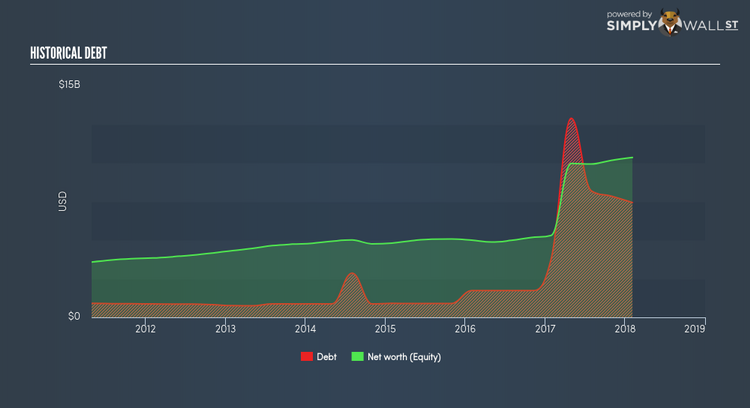Analog Devices Inc (NASDAQ:ADI): Time For A Financial Health Check

Investors seeking to preserve capital in a volatile environment might consider large-cap stocks such as Analog Devices Inc (NASDAQ:ADI) a safer option. Doing business globally, large caps tend to have diversified revenue streams and attractive capital returns, making them desirable investments for risk-averse portfolios. But, its financial health remains the key to continued success. Let’s take a look at Analog Devices’s leverage and assess its financial strength to get an idea of their ability to fund strategic acquisitions and grow through cyclical pressures. Remember this is a very top-level look that focuses exclusively on financial health, so I recommend a deeper analysis into ADI here. See our latest analysis for Analog Devices
Does ADI produce enough cash relative to debt?
Over the past year, ADI has ramped up its debt from US$1.73B to US$7.85B – this includes both the current and long-term debt. With this increase in debt, ADI’s cash and short-term investments stands at US$1.05B for investing into the business. Additionally, ADI has generated cash from operations of US$1.11B during the same period of time, leading to an operating cash to total debt ratio of 14.17%, indicating that ADI’s debt is not appropriately covered by operating cash. This ratio can also be interpreted as a measure of efficiency as an alternative to return on assets. In ADI’s case, it is able to generate 0.14x cash from its debt capital.
Can ADI pay its short-term liabilities?
With current liabilities at US$1.60B, the company has been able to meet these commitments with a current assets level of US$2.35B, leading to a 1.47x current account ratio. Usually, for Semiconductor companies, this is a suitable ratio since there’s sufficient cash cushion without leaving too much capital idle or in low-earning investments.
Does ADI face the risk of succumbing to its debt-load?
ADI is a relatively highly levered company with a debt-to-equity of 71.85%. This is common amongst large-cap companies because debt can often be a less expensive alternative to equity due to tax deductibility of interest payments. Consequently, larger-cap organisations tend to enjoy lower cost of capital as a result of easily attained financing, providing an advantage over smaller companies. By measuring how many times ADI’s earnings can cover interest payments, we can evaluate whether its level of debt is sustainable or not. A company generating earnings before interest and tax (EBIT) at least three times its net interest payments is considered financially sound. For ADI, the ratio of 6.62x suggests that interest is well-covered. High interest coverage serves as an indication of the safety of a company, which highlights why many large organisations like ADI are considered a risk-averse investment.
Next Steps:
ADI’s cash flow coverage indicates it could improve its operating efficiency in order to meet demand for debt repayments should unforeseen events arise. However, the company exhibits proper management of current assets and upcoming liabilities. Keep in mind I haven’t considered other factors such as how ADI has been performing in the past. I recommend you continue to research Analog Devices to get a better picture of the stock by looking at:
Future Outlook: What are well-informed industry analysts predicting for ADI’s future growth? Take a look at our free research report of analyst consensus for ADI’s outlook.
Valuation: What is ADI worth today? Is the stock undervalued, even when its growth outlook is factored into its intrinsic value? The intrinsic value infographic in our free research report helps visualize whether ADI is currently mispriced by the market.
Other High-Performing Stocks: Are there other stocks that provide better prospects with proven track records? Explore our free list of these great stocks here.
To help readers see pass the short term volatility of the financial market, we aim to bring you a long-term focused research analysis purely driven by fundamental data. Note that our analysis does not factor in the latest price sensitive company announcements.
The author is an independent contributor and at the time of publication had no position in the stocks mentioned.

